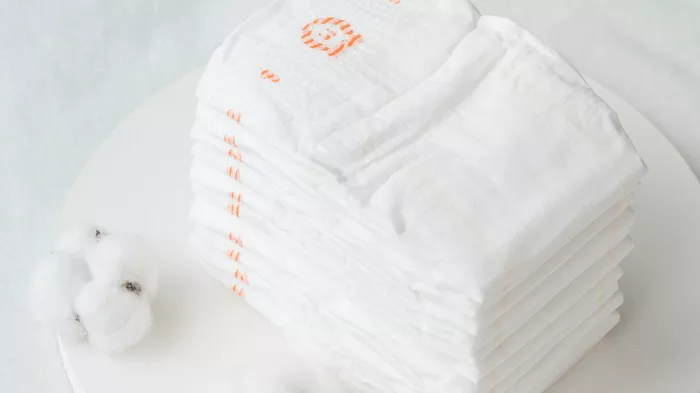Diapers are a fundamental necessity for infants and toddlers, providing comfort and protection against leaks. However, choosing the right size is crucial to ensure maximum effectiveness. Diapers are typically sized based on weight, as this correlates with a baby’s growth and body shape. Ill-fitting diapers can lead to discomfort, skin irritation, and leakage issues, making it essential for parents to understand the sizing system.
Most Common Diaper Sizes
The most commonly used diaper sizes vary depending on the baby’s age and weight. Newborns usually start with size N (newborn), which fits babies up to 10 pounds. As babies grow, they transition to larger sizes. Size 1 is suitable for babies weighing 8-14 pounds, followed by size 2 for those weighing 12-18 pounds. Sizes continue to increase to accommodate the growing needs of babies, with larger sizes designed for toddlers and older children.
Statistics show that sizes 3 and 4 are among the most commonly used diaper sizes. Size 3 typically fits babies weighing 16-28 pounds, while size 4 is suitable for those weighing 22-37 pounds. These sizes cover a significant portion of the infant and toddler stages, making them popular choices for parents.
Diaper Size Guide
To assist parents in selecting the appropriate diaper size for their baby, manufacturers provide detailed size guides based on weight and age. These guides offer a convenient reference point, helping parents make informed decisions when purchasing diapers. It’s essential to consult these guides regularly, as babies’ growth rates can vary, necessitating size adjustments over time.
Below is a sample diaper size guide:
- Size N: Up to 10 pounds (Newborn)
- Size 1: 8-14 pounds (2-5 months)
- Size 2: 12-18 pounds (5-8 months)
- Size 3: 16-28 pounds (8-12 months)
- Size 4: 22-37 pounds (12-18 months)
- Size 5: 27+ pounds (18+ months)
This guide serves as a reference, but parents should always consider their baby’s individual needs and body shape when selecting a size.
Brand Comparisons
Different diaper brands may have slight variations in sizing, as well as unique features tailored to address specific concerns. Some brands offer diapers with stretchable sides for a snug fit, while others focus on extra absorbency for overnight use. It’s essential for parents to compare various brands and consider their preferences and baby’s needs when making a decision.
For example, Brand A may offer diapers with a more generous fit, suitable for babies with chubby thighs, while Brand B specializes in hypoallergenic options for sensitive skin. By exploring different brands and their sizing options, parents can find the best fit for their baby’s comfort and protection.
Buying Tips
When purchasing diapers, it’s tempting to buy in bulk to save time and money. However, considering the rapid growth of babies, this approach may not always be practical. Babies can outgrow diaper sizes faster than expected, leading to unused diapers and unnecessary waste.
Instead, parents can opt to buy diapers in smaller quantities, especially during the early months when growth is most rapid. Regularly assessing the baby’s size and needs allows parents to adjust their diaper purchases accordingly, minimizing waste and ensuring a proper fit at all times.
Cost-Effectiveness
Choosing the right diaper size can also have cost implications in the long run. While larger-sized diapers may seem more economical due to their higher unit count, using the wrong size can result in frequent leaks and discomfort, leading to increased diaper usage and potential skin issues. Additionally, investing in diapers that are too large for the baby can be wasteful and inefficient.
By selecting the appropriate size based on the baby’s weight and age, parents can optimize diaper usage, reducing the likelihood of leaks and minimizing unnecessary expenses. While the initial cost may be slightly higher for smaller-sized diapers, the long-term benefits in terms of comfort, effectiveness, and cost-efficiency outweigh the upfront investment.
Environmental Impact
The environmental impact of diaper use is a growing concern for many parents. Traditional disposable diapers contribute to landfill waste and take hundreds of years to decompose fully. As a result, eco-conscious parents may seek alternative options that are more environmentally friendly.
One alternative is the use of biodegradable or compostable diapers, which are made from sustainable materials and break down more quickly than conventional diapers. These options offer a greener solution for diapering while still providing the convenience and reliability parents expect.
Cloth diapers are another eco-friendly choice, as they can be washed and reused multiple times, reducing waste and environmental impact. Although cloth diapers require more upfront investment and effort in terms of laundering, many parents find them to be a cost-effective and sustainable option in the long run.
FAQs
Q: How do I know if my baby’s diaper is the right size?
A: Pay attention to signs of discomfort, such as red marks or indentations on the baby’s skin, frequent leaks, or difficulty fastening the diaper properly. If the diaper seems too tight or too loose, it may be time to consider a different size.
Q: Can I use diaper size charts interchangeably between brands?
A: While diaper size charts provide a general guideline, it’s essential to consider each brand’s unique sizing and fit. Some brands may run smaller or larger than others, so it’s best to refer to the specific size chart provided by the manufacturer.
Q: How often should I check my baby’s diaper size?
A: It’s recommended to regularly assess your baby’s growth and diaper fit, especially during periods of rapid development. Keep an eye out for signs that the current size may be too small or too large, and be prepared to make adjustments as needed.
In conclusion, selecting the right diaper size is crucial for ensuring your baby’s comfort, preventing leaks, and minimizing waste. By understanding diaper sizing, consulting size guides, comparing brands, and considering environmental impact, parents can make informed choices that prioritize their baby’s well-being and sustainability.


